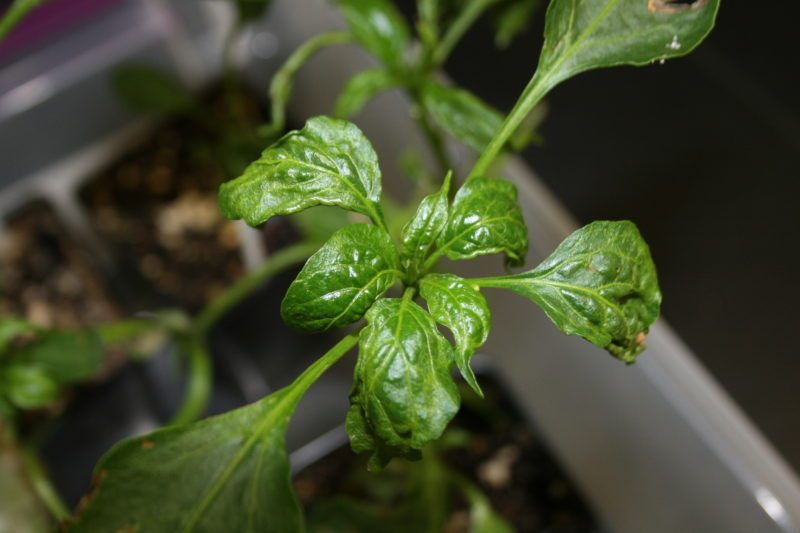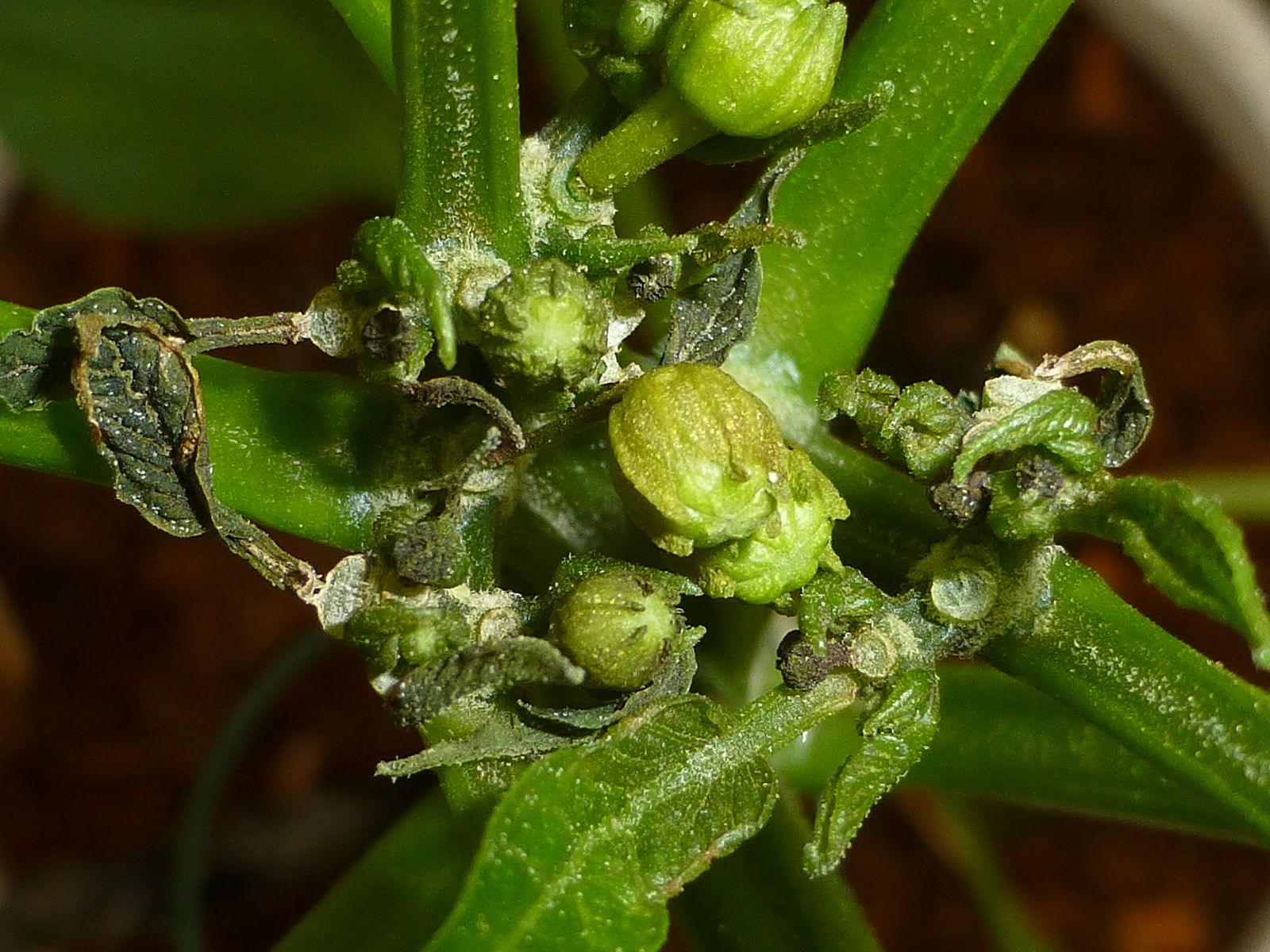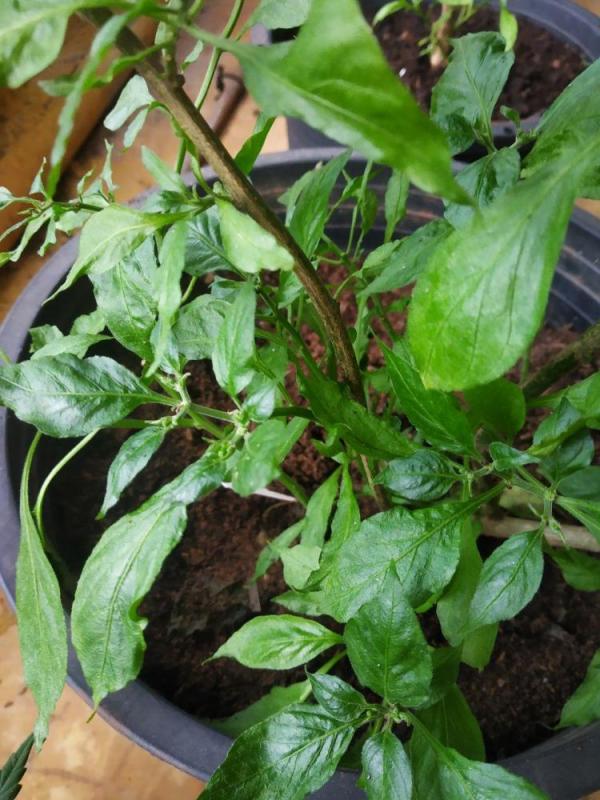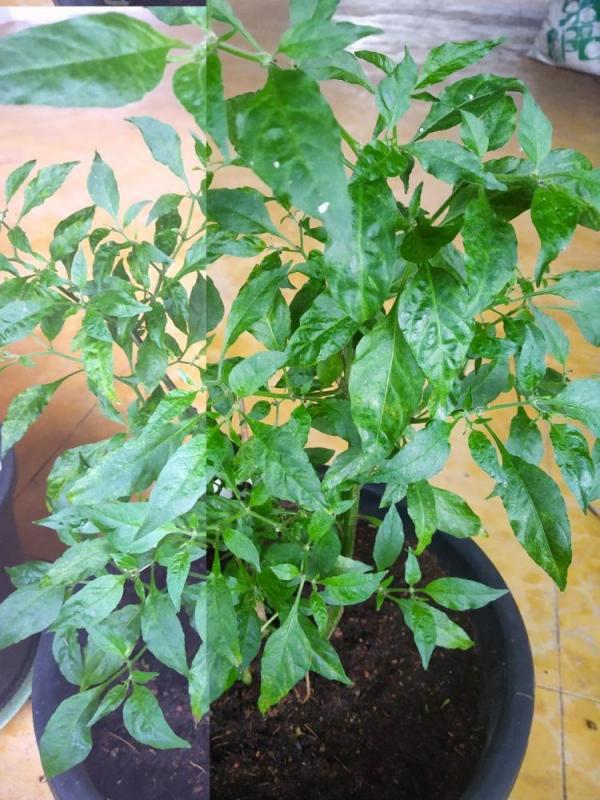Well, unfortunately seem to be getting expert experience with these critters.
Was going to put this post in the pest thread but its to important for that.
After battling sFl broad mites(and many other pests) off and on for years now have come to a positive conclusion.
Once you see broad mite damage, its probably to late to have a pristine plant that produces pristine fruit. Yes you can save the plant if you catch it early, but it will produce stunted and deformed foliage and fruit, if not forever more than for a long long time...
Once even a small amount of broad mites inject their toxic saliva, thats it. Most plants can recover with treatments, but will never be the same again. Leafs will continue to be deformed as will the fruit. The degree of deformation/stunting all depends on the severity of infestation and how quickly it was stopped by treatments.
Don't get me wrong, a recovered broad mite infested plant will still produce some good tasting fruit, it just wont look/be/produce the same as a plant that never got infected with broad mites... Yield will be much lower, fruit/foliage won't be as big and will be deformed. Plant will have stunted growth. Kind of like Chile polio...
My suggestion to those of us that have have had them in the past, or in areas that have them, be preemptive. Spray neem or some other organic miticide on a regular basis from when plants are very young, way way before you see any damage. Once you see broad mite damage, then its really to late to get a full productive crop no matter what you do...
jmo



pure Chile plant evil under magnification

Was going to put this post in the pest thread but its to important for that.
After battling sFl broad mites(and many other pests) off and on for years now have come to a positive conclusion.
Once you see broad mite damage, its probably to late to have a pristine plant that produces pristine fruit. Yes you can save the plant if you catch it early, but it will produce stunted and deformed foliage and fruit, if not forever more than for a long long time...
Once even a small amount of broad mites inject their toxic saliva, thats it. Most plants can recover with treatments, but will never be the same again. Leafs will continue to be deformed as will the fruit. The degree of deformation/stunting all depends on the severity of infestation and how quickly it was stopped by treatments.
Don't get me wrong, a recovered broad mite infested plant will still produce some good tasting fruit, it just wont look/be/produce the same as a plant that never got infected with broad mites... Yield will be much lower, fruit/foliage won't be as big and will be deformed. Plant will have stunted growth. Kind of like Chile polio...
My suggestion to those of us that have have had them in the past, or in areas that have them, be preemptive. Spray neem or some other organic miticide on a regular basis from when plants are very young, way way before you see any damage. Once you see broad mite damage, then its really to late to get a full productive crop no matter what you do...
jmo



pure Chile plant evil under magnification



